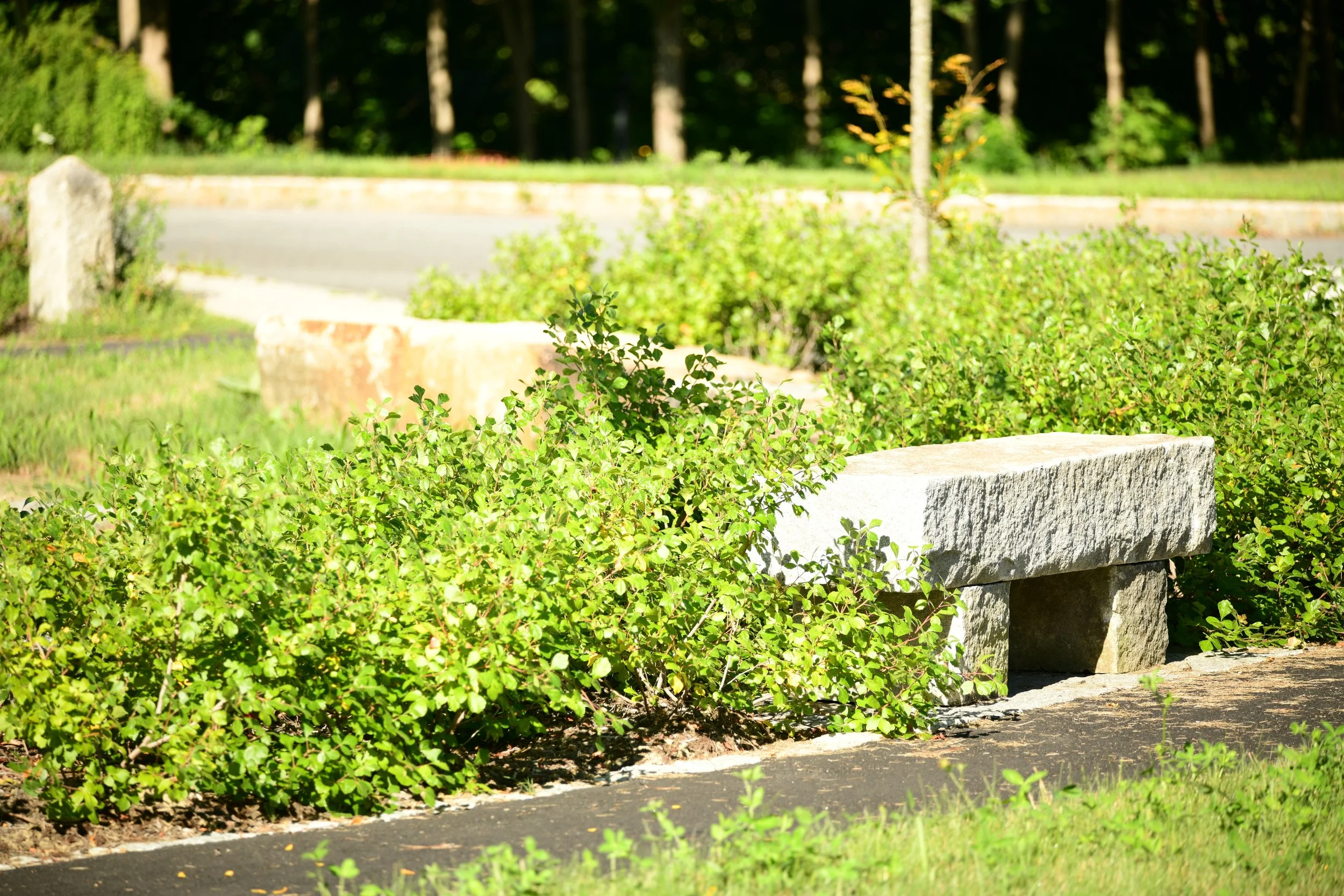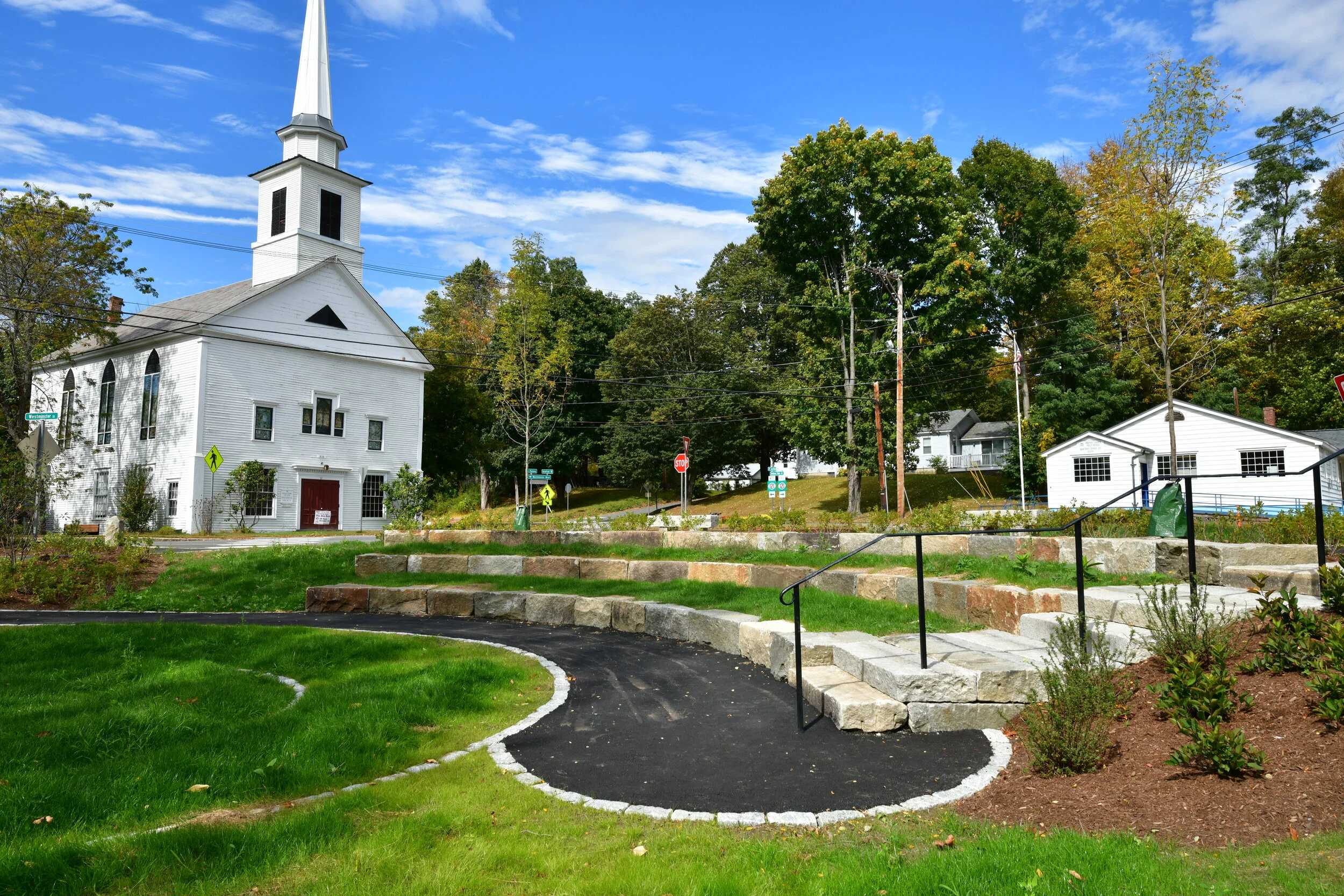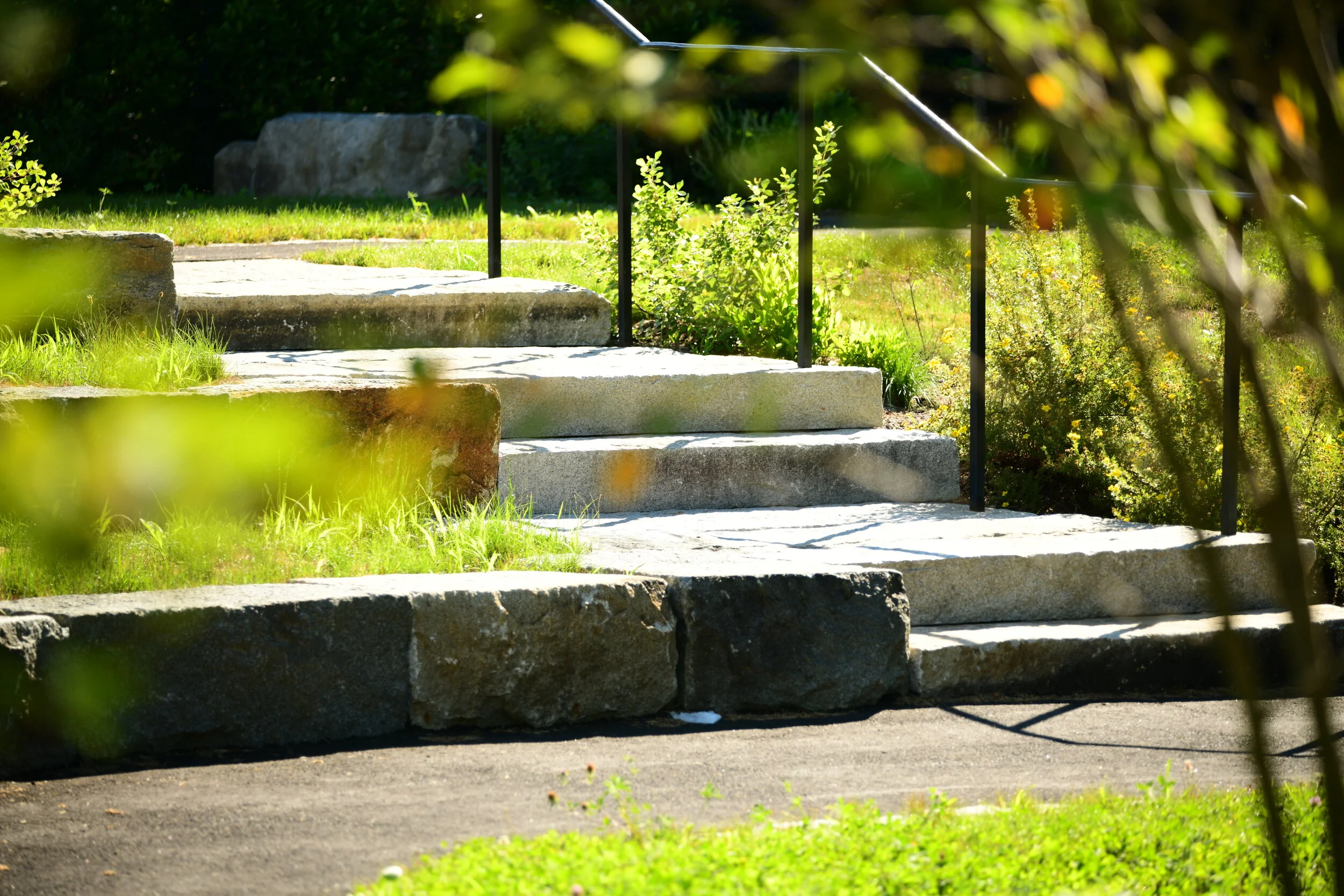The objective of the Saxtons River Park project was to develop and build a unique park that would be a community asset while also reusing a visible, abandoned space on Main Street. The site, while having some historical significance, had also been designated as a brownfield by the U.S. Environmental Protection Agency. This designation required any design to incorporate special actions to protect the health of the park users. Terrigenous collaborated with local firms and village trustees to conceptualize a final design that created a public gathering space, a testament to the Village’s historic mills, and a safe containment of hazardous materials.
Design Phase 1:
The initial design work revolved around the designation of the park site as a brownfield. The Village planned to cap the site in order to create accessible space for recreation and education— community-focused goals that Terrigenous refined through public meetings. Terrigenous then worked closely with Weston & Sampson Engineers Inc. to develop solutions for making the site safe, as well as b.green Landscape Architecture to refine ideas tailored towards public use of the space. This design phase concluded with an ‘opinion of probable cost’ needed for grant funding.
Design Phase 2:
After using the work done in Design Phase 1 to secure federal funding, the Village began Design Phase 2 with a more accurate project budget. In this stage, control of the overall concept was turned over to Julie Moir Messervy Design Studio who re-envisioned the design to reflect the reduced budget and scope.
Construction:
Once the design for the park had been finalized, Saxtons River awarded the construction contract to Buck Adams Trucking and Excavating. Adams Trucking contracted Terrigenous to complete the stonework that made up an amphitheater, bringing their experience and craftsmanship to one of the more challenging aspects of the project. By working with both the town manager of Rockingham and the village trustees of Saxtons River, Terrigenous creatively repurposed stone bridge trusses, languishing in a town dump, to make the project more affordable and environmentally-friendly. The park was built in the summer of 2019, successfully completing a nine-year process that required carefully fostered ideas that spanned the distance between design, construction, and the community-building aspects of public space.












